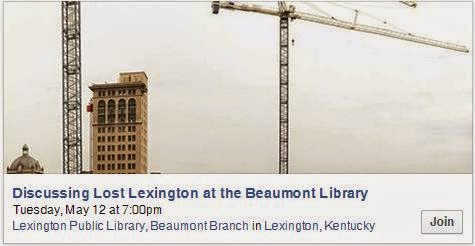 |
| L’Hermione on the Atlantic. L’Hermione 2015. |
There can be no doubt that Kentucky, and Lexington specifically, is forever linked to the Marquis de Lafayette. The city of Lexington itself sits in Fayette County, a place named after Messr. Lafayette. Throughout the Commonwealth, place names link Kentucky to France and to America’s favorite Frenchman.
So when a tangible link to to the Marquis is coming to America, we’ll take note.
Americans, of course, recall Lafayette as being the great Frenchman who served under General Washington during the American Revolution and helped secure for our fledgling nation several great victories and, ultimately, our independence from the British crown.
 |
| Painting of the Marquis de Lafayette by Kentucky painter Matthew Jouett. Ky. Historical Society. |
Lafayette’s first arrival in the United States came in 1777 when he, at the age of 19, sailed to America against the wishes of his national government. Upon arrival, he volunteered for the Americans and here developed a bond with General Washington. Wounded the following year, he returned home to his native France where he convinced the French government to send a force to support the Americans against the British.
On this return trip, a frigate under Lafayette’s command sailed from Rochefort, France in March 1780. The ship, Hermione, crossed the Atlantic in 38 days and arrived first in Boston. Of the ship, Lafayette said that “she sails like a bird.”
“Here I am” was the message sent from Lafayette to his friend, General Washington. A 13-gun salute welcomed General Lafayette to America. Lafayette’s French troops joined Washington in the Virginia theatre where, in 1781, Lord Cornwallis was trapped at Yorktown.
The French fleet in the Chesapeake helped to encircle the British regulars and among that fleet was Hermione. Hermione would return to France in 1782 and, again in service against the British, would wreck in 1793.
A little over a quarter of a century later, General Lafayette returned to America in 1824-25 for a whirlwind tour in which the celebrated soldier of the Revolution was lauded. His tour also included the laying of many cornerstones at masonic temples, including one in Lexington.
While in Lexington, Lafayette also sat in the North Upper Street studio of painter Matthew Jouett for a portrait. The son of Jack Jouett, Matthew was considered the greatest painter of portraits west of the Alleghenies.
 |
| L’Hermione. L’Hermione 2015. |
 |
| Nautical stats of L’Hermione. L’Hermione 2015. |
Fast forward just over two centuries from the wrecking of the Hermione, and construction on a second Hermione – L’Hermione – was begun in 1997. The new ship is an exact replica of the ship once under Lafayette’s command.
With 15 miles of rope, a crew of 242, 3 masts, 26 guns on the gundeck and another 8 on the upper deck, a system of 1,000 pulleys and a 2,200 square meter usual sail area, L’Hermione set sail last month for America.
She is currently approaching Yorktown (though she is to be celebrated and is not intent on trapping the British army).
On she’ll sail up the eastern seaboard with several ports of call. Details are available on the Voyages’ official website, hermione2015.com.
On Sunday, the voyage will be profiled on CBS Sunday Morning. You can also follow the trek of L’Hermione on Twitter @hermionevoyage.
Cue Neil Diamond. They’re “Coming to America.”





















